As part of the negotiations conducted by the Couperin consortium, the Service Commun de la Documentation has signed subscription licenses with a number of publishers, offering advantages for open-access publishing in the form of reduced or fully deductible APC(Articles Processing Charges).
These APC reductions or deductions should not be seen as an encouragement to use APC, but as a response to specific laboratory needs for open access publishing. In this sense, many institutions recommend not paying additional fees for a hybrid journal (a journal already paid for by the institution's subscription).
| Publisher | Date of agreement | Type of agreement | Automatic cost reduction management | Documents to consult |
| EDP Sciences | 2022-2026 | Publish & read: Subscription + open access publication without APC in CC-BY | YES: automatic management on the basis of the correspondence writer's affiliation address | List of journals included in the agreement with EDP |
| Wiley | 2022-2024 | Publish & read: subscription + open-access publication without APC in CC-BY, CC-BY-NC or CC-BY-NC-ND depending on the journal. | YES: via a form in the submission interface, with identification of the affiliation in a standardized list of establishments | List of journals included in the agreement with Wiley |
| Elsevier | 2019-2023 | A 40% discount on the public APC rate for hybrid and full Open Access journals (Freedom collection, BMF, Cell Press), with the exception of the following titles: Lancet, journals from the Cell Press collection and a range of journal titles from of learned societies. |
YES: Couperin centrally validates authors' affiliation to the Elsevier national license | List of Elsevier titles eligible for APC discount |
In coordination with the Couperin consortium,Université Savoie Mont Blanc has been conducting an annual survey of publication fee (PF) expenditure since 2017. The aim is to have concrete data on the reality of institutions' publication expenses, for greater transparency of scientific publishing costs.
The survey covers 2 types of expenditure:
- Publication fees not related to Open Access: submission fees, fees for additional pages, color figures, etc.
- Specific fees for Open Access publications, known as APC (Article Processing Charges). With this model, the author or institution pays for the article to be published in Open Access, i.e. directly accessible online, freely and without charge. Two types of journal are concerned: so-called "full Open Access" journals, where all published articles are freely consultable, and so-called "hybrid" journals, where only some of the articles are freely consultable, while the others are subject to a charge.

The results of this national survey are posted annually on the OpenAPC website.
APC at USMB
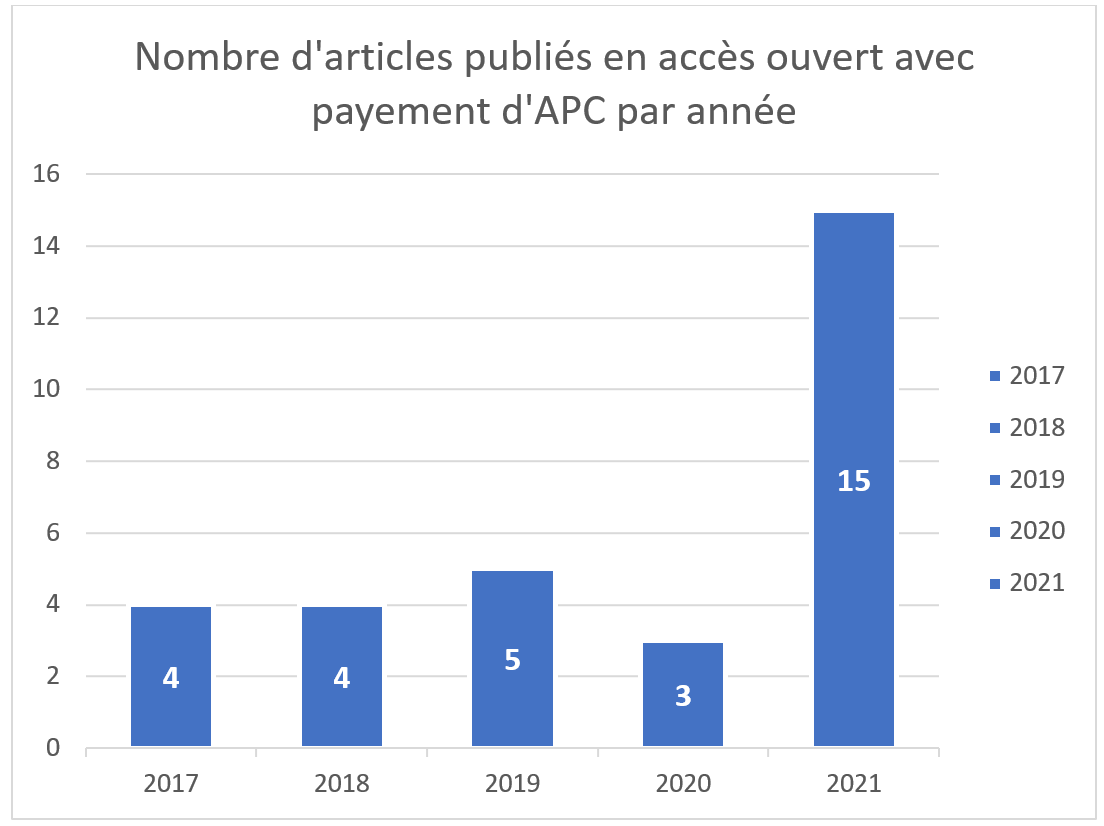
From 2017 to 2020, very few articles were published in open access with APC payment. In 2021, the number of articles increases considerably.
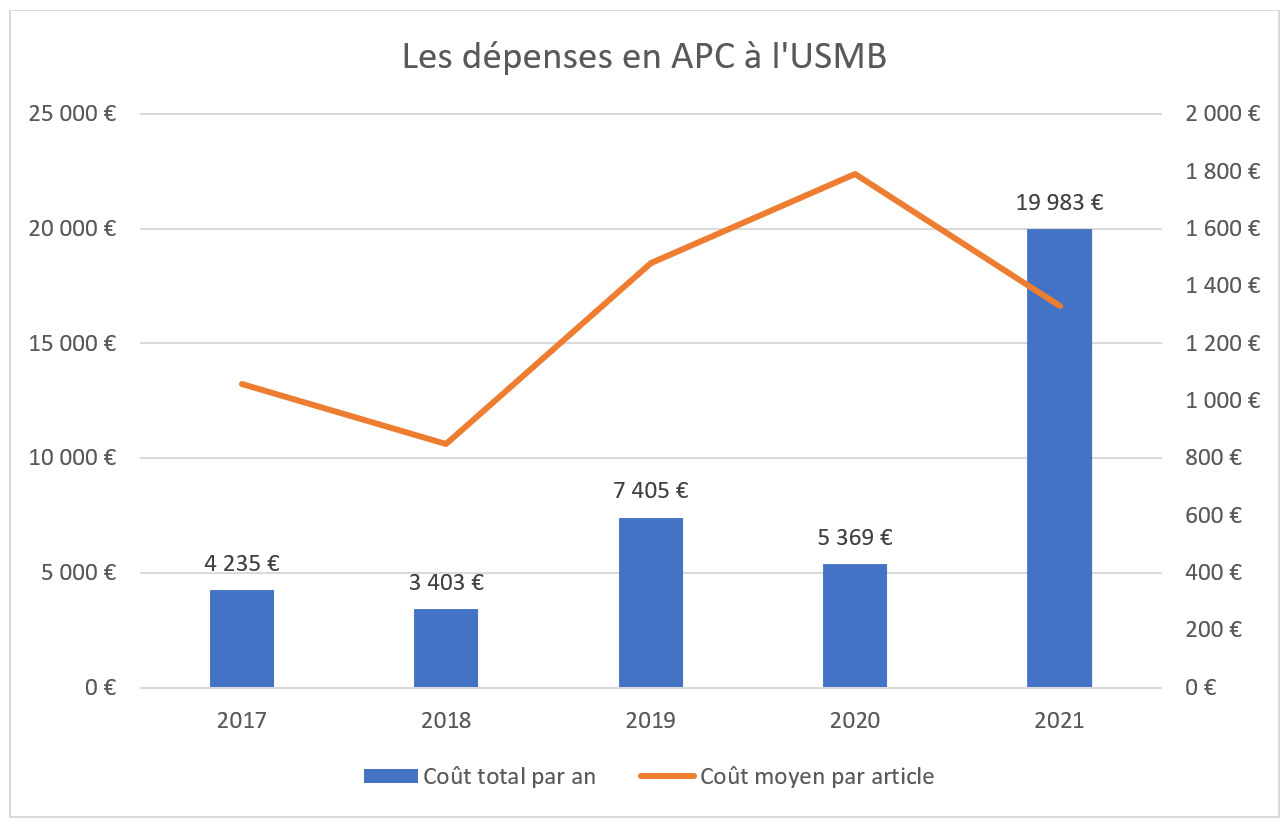
Expenditure is rising accordingly, although the average cost per APC is falling: it was 1,481 euros in 2019, 1,790 euros in 2020, and 1,299 euros in 2021. The average international cost of an APC in a full OA journal is 1,500 euros (sources: 2017 data from the national APC expenditure survey coordinated by the Couperin.org consortium + 2017 and 2018 data published on the OpenAPC platform), so USMB researchers mostly publish in journals for which APC amounts are reasonable.
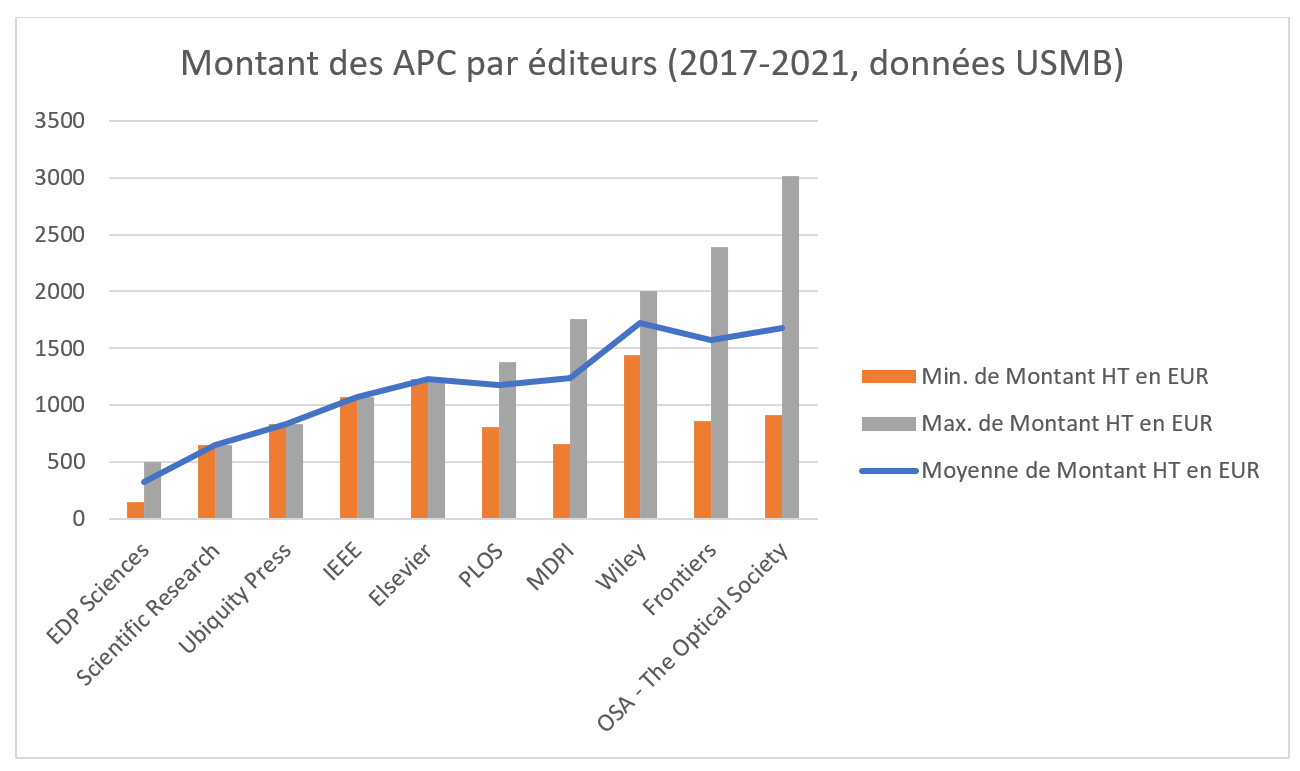
At USMB, the lowest amount spent on APC is 150 euros HT for an article published by EDP Sciences, while the highest is 3016 euros HT for an article published by The Optical Society. The publishers with which USMB researchers publish and whose APC amounts are higher than the international average are Frontiers, MDPI, Wiley and The Optical Society.
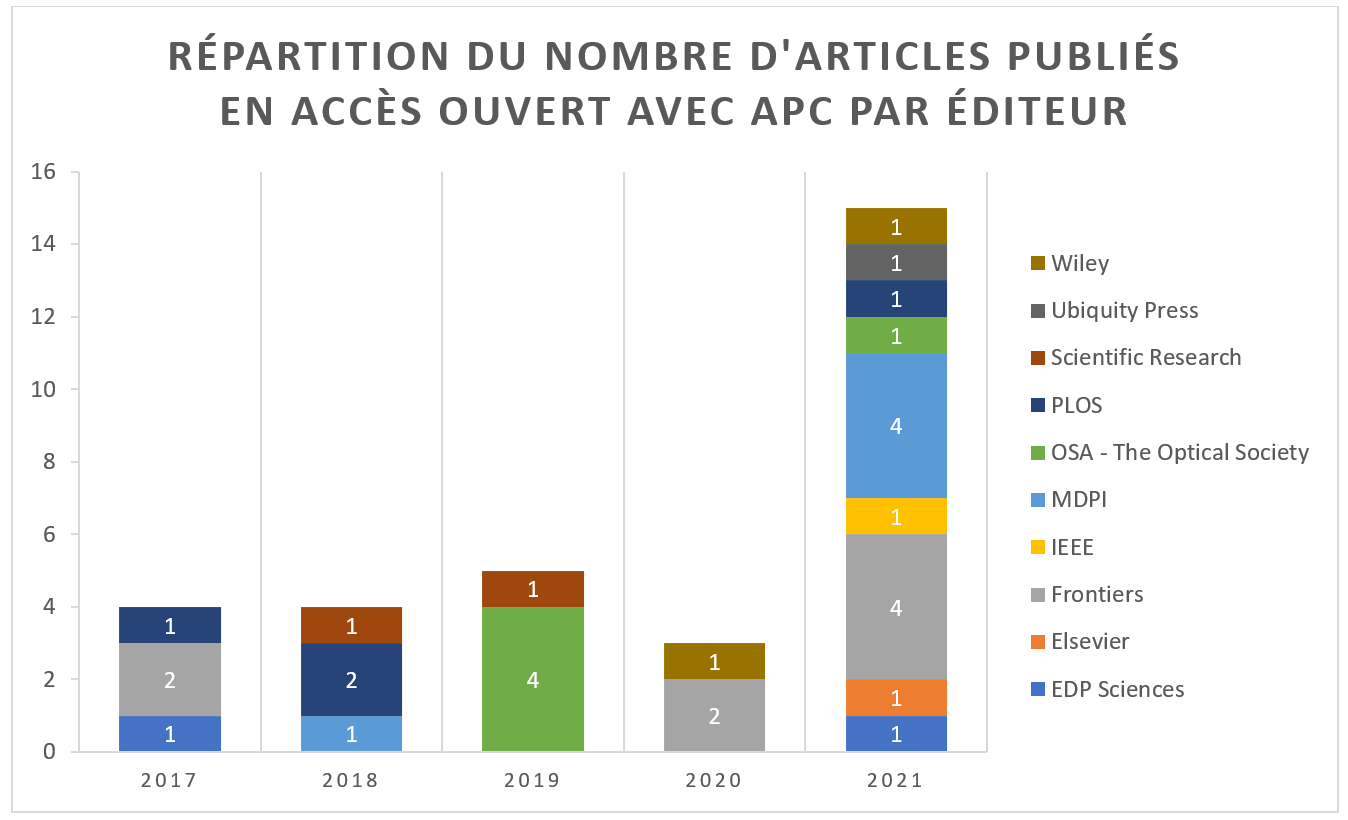
Articles have been published by Elsevier, EDP Sciences and Wiley, with whom the USMB has signed agreements to benefit from reduced - or even fully deducted - APC fees.
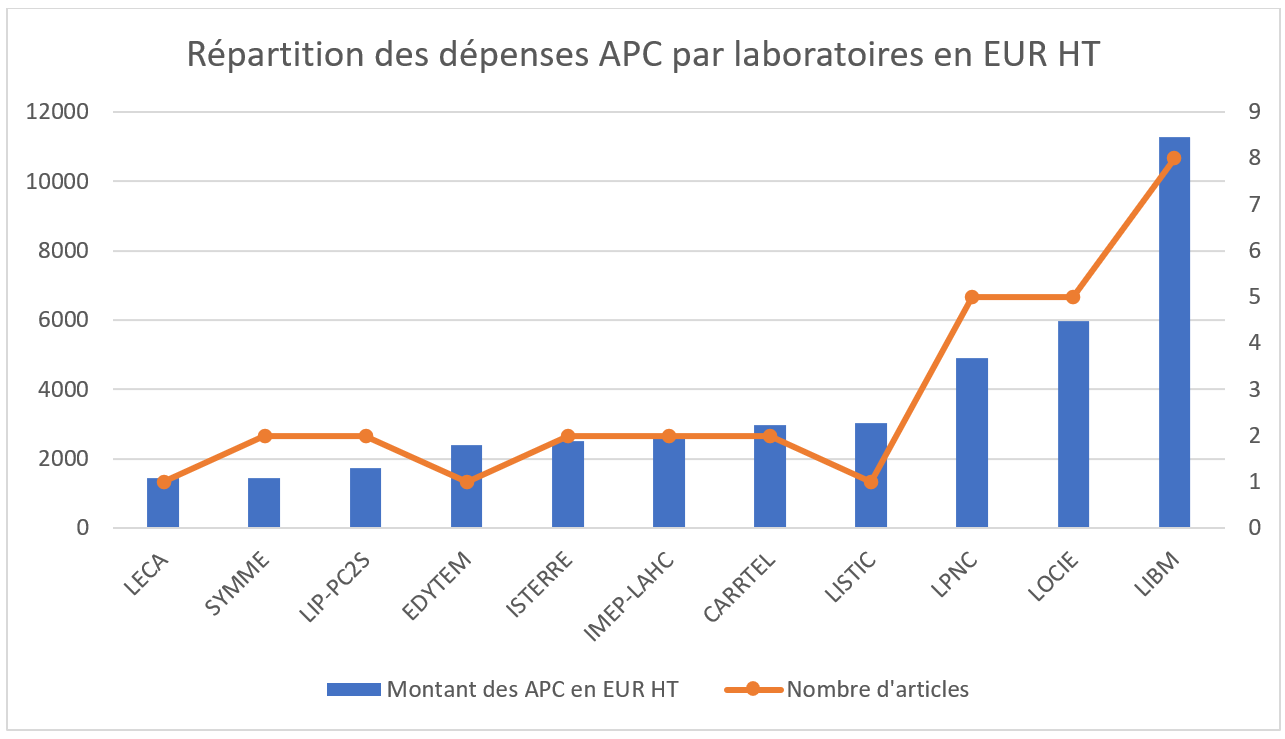
Not all laboratories are represented in the survey, with the majority of APC expenditure coming from STM laboratories. This trend is international and not unique to USMB.
Open access publishing
Publishing in open access does not necessarily mean paying APCs. The vast majority of pure open access journals are APC-free (70% in March 2022 according to DOAJ).
Thanks to Article 30 of the Law for a Digital Republic, even after granting exclusive rights to a publisher, you have the right to make the final version of your manuscript available free of charge, subject to the agreement of any co-authors. So, if you wish to make your articles available to the scientific community after publication in a subscription-based journal, you can deposit them in an open archive such as HAL.
The University of Lille has developed an easy-to-use tool for finding out about your rights concerning the distribution of a publication.
Article 30 of the law for a digital republic
"When a scientific writing resulting from a research activity financed at least half by allocations from the State, local authorities or public establishments, by subsidies from national funding agencies or by European Union funds is published in a periodical appearing at least once a year, its author has, even after having granted exclusive rights to a publisher, the right to make the final version of the manuscript accepted for publication available free of charge in an open format by digital means, subject to the agreement of any co-authors, provided that the publisher itself makes the final version available free of charge by digital means or, failing this, on expiry of a period running from the date of first publication. This period is a maximum of six months for a publication in the fields of science, technology and medicine, and twelve months for a publication in the humanities and social sciences.
Further information
Would you like to publish with open access? Would you like to know more about this publication model? The Couperin consortium offers a FAQ for researchers, to help you make the right choices before you publish.
You can write to us at question-bu@univ-smb.fr if you have any questions, or if you would like to benefit from academics for filing in HAL.
